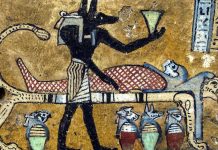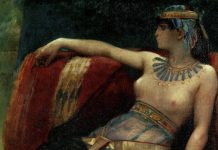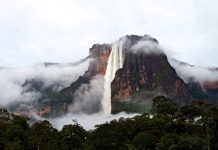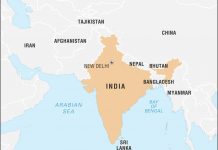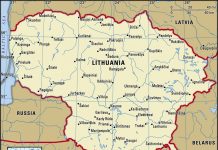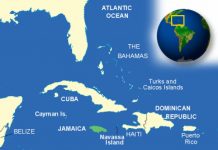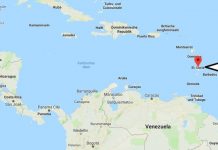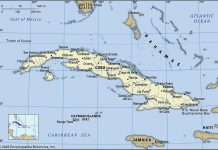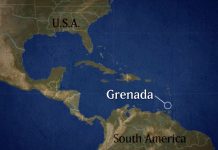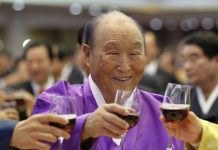Republic of Kyrgyzstan
Capital: Bishkek (former Frunze)
Area: 198,500 sq km/76,641 sq mi
Population: 4,600,000
Population density per sq. km/sq. mile: 23/60
Ethnic composition
57% of the population are ethnic Kyrgyz, 18% are Russians, 13% are Uzbeks, 3% are Ukrainians, 2% are Germans. The Kyrgyz language is part of the group of Turkic languages; the writing system is Cyrillic. Since 2005, the Kyrgyz language will finally become the official language. However, Russian remains the official language in regions with a predominantly Russian-speaking population.
Religion
The main religion is Islam, with the majority of ethnic Kyrgyz, Uzbeks and Tajiks professing Hanafi Sunnism. After 1991, many mosques were opened. There is a Russian Orthodox minority.
History
Inhabited mainly by horse-breeding nomads living in the mountains, Turkic-speaking descendants of those who conquered in the XVIII century. Kyrgyzstan was annexed to Russia in 1864. From 1917 to 1924 it was part of the independent Republic of Turkestan, then it was an autonomous republic of the USSR and since 1936 it became an independent republic within the Soviet Union. Notable reforms and collectivization carried out in 1920 and 1930 led to a more sedentary lifestyle of many Kyrgyz nomads, but also met resistance from local armed groups (Basmachi).
For a long time, the republic has been a stronghold of conservatism. During the constitutional referendum in the USSR in March 1991, voters overwhelmingly supported the preservation of the Union by 88%, and in August 1991, the Communist Party of the Republic supported the putschists. However, Askar Akayev (born 1944), a communist reformer who became president of the republic in November 1990. After the riots on the Kyrgyz-Uzbek border, which killed 300 to 1,000 people in the densely populated Fergana Valley, he condemned the coup as “unconstitutional” and prevented an attempt by the local KGB and military chiefs to overthrow his government. On August 28, 1991, he resigned from the Communist Party and issued a decree on the dissolution of the Communist Party of the Republic and on the nationalization of its property. On August 31, 1991, the Parliament of the Republic (the Supreme Council) voted to secede from the USSR. After the coup in Moscow was suppressed, Soviet leader Mikhail Gorbachev offered Akayev the post of vice-president of the USSR, but Akayev refused it. And on October 12, 1991, he won a complete victory in the presidential elections of Kyrgyzstan. These were the first national elections in the republic.
Kyrgyzstan joined the Commonwealth of Independent States (CIS), which was formed in December 1991. But he is also trying to establish close relations with Turkey, with which he shares linguistic roots. Kyrgyzstan’s independence was recognized by the United States and other Western states in January 1992. In the same month, he joined the Council for Security and Cooperation in Europe (CSCE, later OSCE), and in March 1992 — the United Nations. Soon Kyrgyzstan began to be called the “real center of democracy” on the territory of the former Soviet Central Asian republics, because, despite the fact that the former Communist Party was revived in June 1992, its authority among the population was sufficiently undermined. In 1991, due to the growth of nationalist sentiments, more than 100,000 ethnic Russians left the newly formed state. This led to the problem of “brain drain”. The economy, which was previously based on subsidies from Moscow, has undergone significant restructuring since 1991, which led to price liberalization. Trade relations with Western countries began to develop. But in the short period up to 1995, there was a decline in GDP, a sharp increase in inflation and crime rates. All these processes were further aggravated by Kyrgyzstan’s withdrawal from the ruble zone in May 1993 and the introduction of its own monetary unit, the som.
In 1993, the positions of Akayev’s government were undermined by accusations of corruption by conservative communists and nationalists, who held the majority of votes in Umuk Kenya, a legislature consisting of 350 deputies and elected during the Soviet period. As a result, in December 1993, Prime Minister Tursunbek Chyngyshev and Vice President Felix Kulov were forced to resign. Former communist leader Apas Dzhumagulov returned to Chyngyshev’s place. However , in January and October 1994 Akayev, with the support of reform deputies, struck back and held two national referendums on the issue of confidence and on the adoption of a package of constitutional reforms that implied replacing the Uluk Kenesh with a smaller elected bicameral body. During the first plebiscite, Akayev’s reform program was supported by 96% of votes, and the package of constitutional reforms was approved by 70% of voters. In February 1995, a new pro-Akayev parliament was elected.
The priorities of the presidential program are the privatization of land, giving the Russian language the status of the state language on a par with Kyrgyz in order to suspend the still ongoing mass departure of qualified Russian-speaking workers and preserve the CIS, which is of great economic importance for Kyrgyzstan.
Akayev is also making every effort to preserve Kyrgyzstan as a secular state and prevent the spread of Islamic fundamentalism from neighboring states such as Tajikistan. Kyrgyzstan established close relations with other neighbors — Kazakhstan and Uzbekistan — and in May 1994 entered into an economic union with them. In June 1994, these countries became even closer socially and militarily, and in August 1996 an agreement was reached on the creation of a single Central Asian economic market by 1998. In February 1995 An Interstate Council was formed with an annual change of chairman to develop a unified policy and manage the trilateral union. In December 1995, Akayev was re-elected president, ahead of the candidate from the CPC. His powers as president were expanded after a referendum in February 1996, 94% of the voters supported the amendments to the Constitution. And in 1996-1997, after the adoption of a bill restricting the freedom of the media and requiring permission to hold rallies, there were fears that this would lead to a violation of civil rights. In March 1996, Apas Dzhumagulov was appointed Prime Minister, but he resigned for health reasons two years later at the age of 63. He was replaced by the head of the presidential administration Kubanychbek Dzhumaliev.
In December 1998, the former chairman of the 1st State Property Committee, Jumabek Ibraimov, became Prime Minister. He received broad powers to appoint and dismiss ministers and heads of departments. Ibraimov encouraged privatization and led the fight against corruption. In April 1999, he died of stomach cancer. He was replaced by former Finance Minister Amangeldy Muraliev.
The privatization program, as a result of which 60% of the state industry has been transferred to the private sector since 1992, was suspended in June 1997 for the duration of the work of a special commission investigating the accusation of undervaluation in the course of some already completed transactions. However, private ownership of land has been allowed since January 1997. GDP growth has accelerated since 1995 and exceeded 10% in 1997. In 1994, Kyrgyzstan joined the NATO military cooperation program Partnership for Peace. But despite this, ties with Russia still remain strong. In March 1997 An agreement was reached on extending the period of Russian control of the Kyrgyz border until the end of 1997 and on joint patrolling of the Tajik-Afghan border.
In July 1998, the Constitutional Court ruled that President Akayev has the right to participate in the 2000 presidential elections, despite the fact that the Constitution stipulates a limit of only two terms. In October 1998, during a referendum, voters approved the introduction of the right of private ownership of land.





